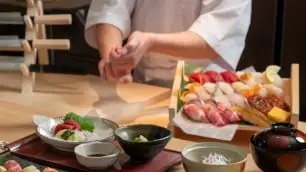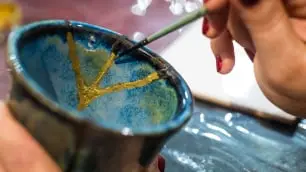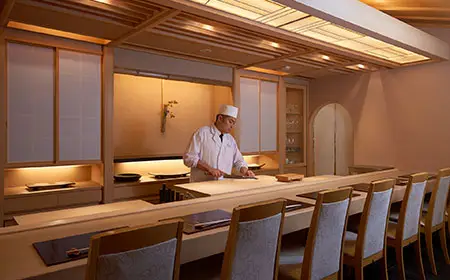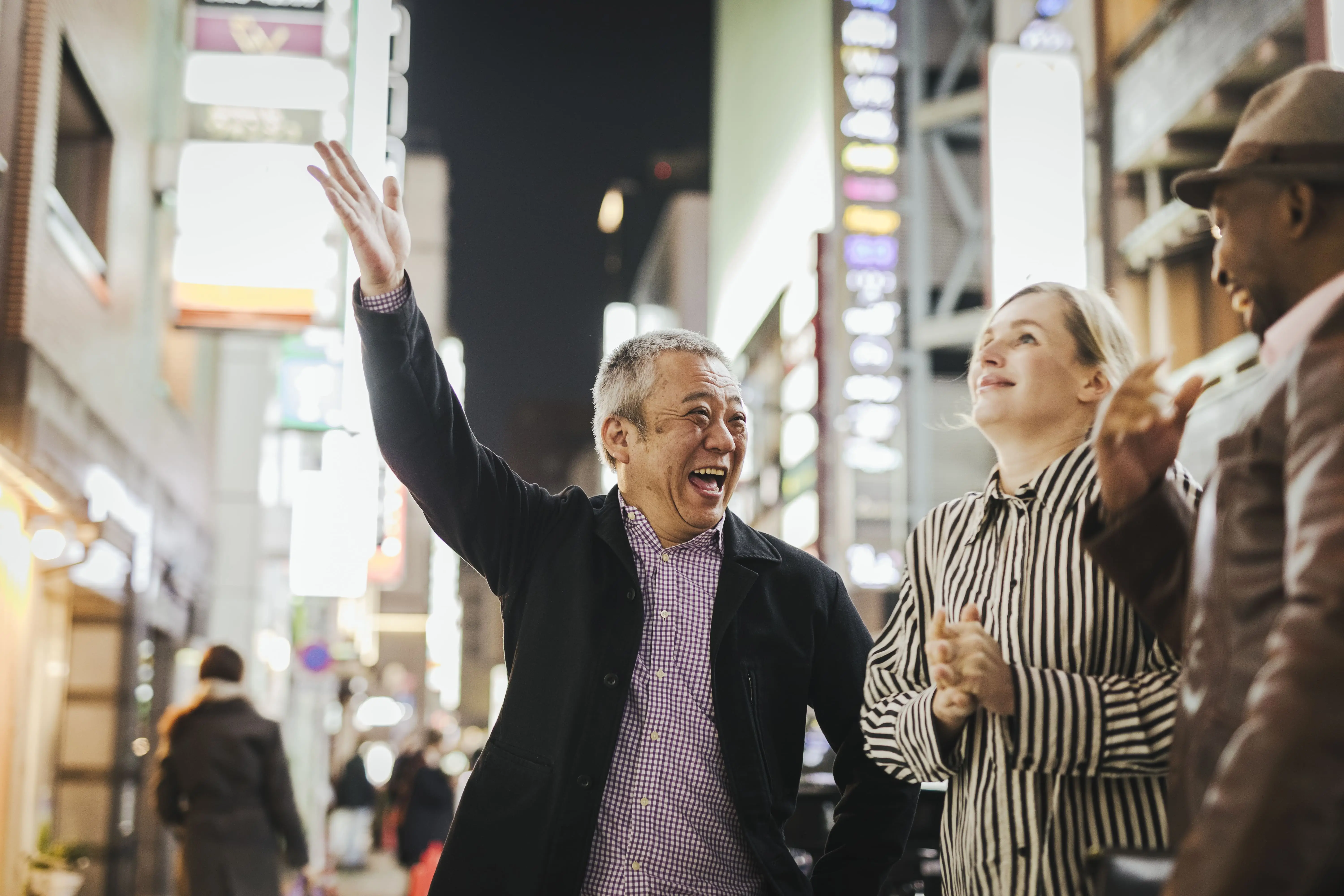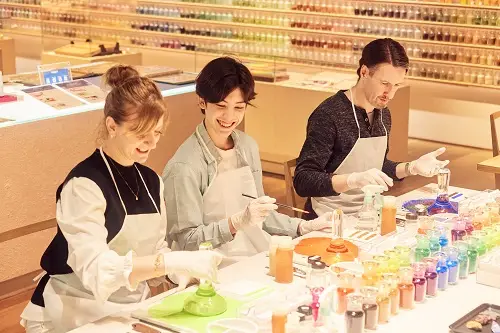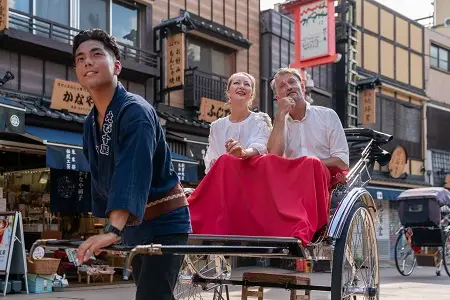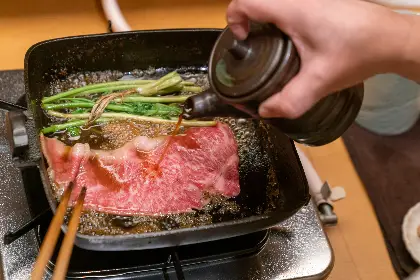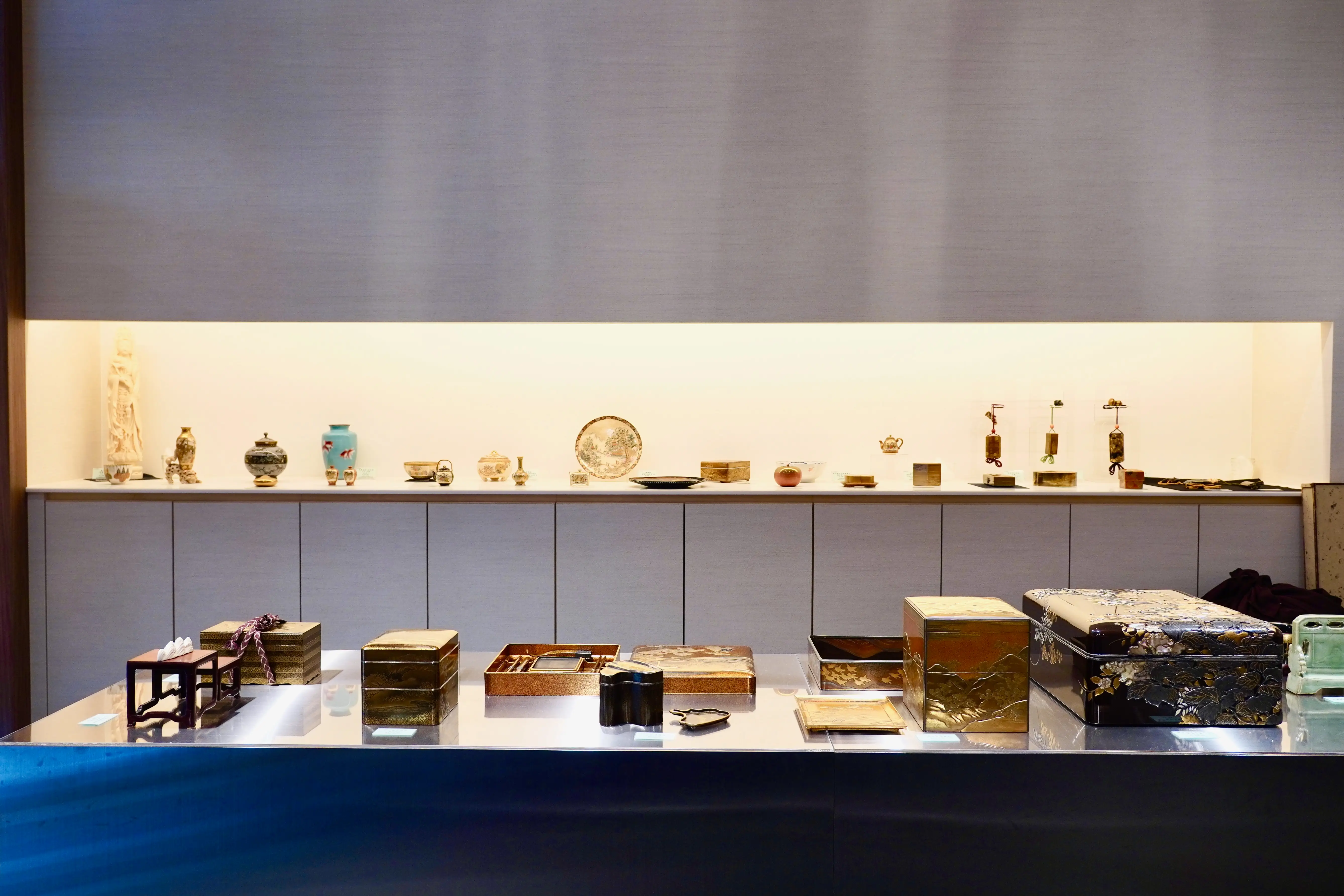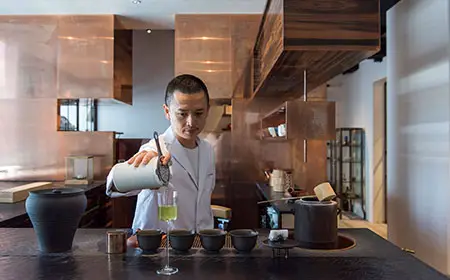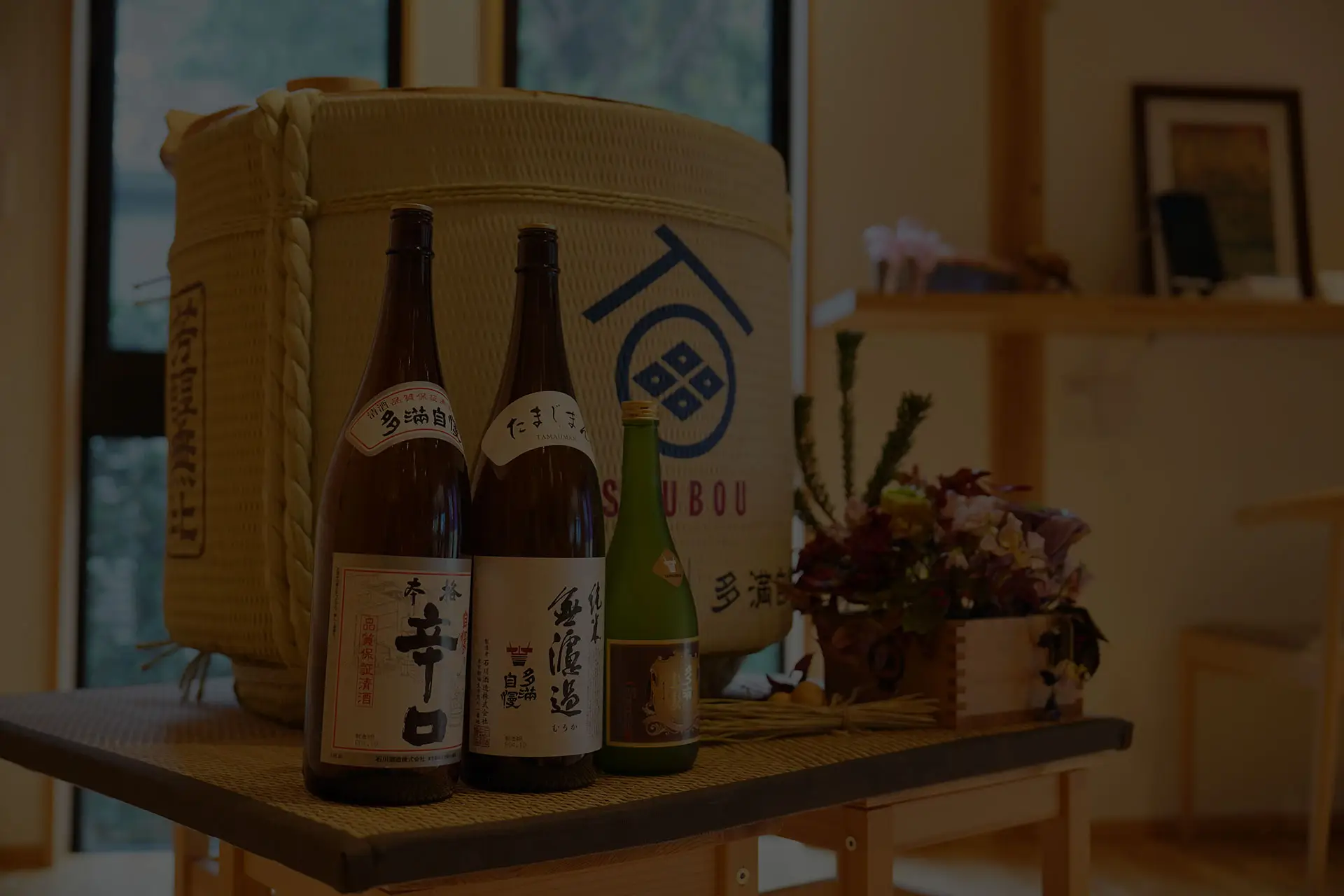
THE HIDDEN POWER BEHIND TRADITIONAL JAPANESE CUISINE
Unlock one of the secrets to Japan's revered culinary heritage. At a historic sake brewery where traditional craftsmanship meets modern luxury, or an innovative and elegant restaurant, take an intriguing voyage to discover the many powers of koji through gastronomic delights and exclusive experiences.
Koji mold is indispensable to Japan's traditional food culture. It is an important microorganism in the production of sake, Japan's representative alcohol beverage, as well as soy sauce, miso, and other fermented seasonings.
When added to ingredients such as rice, soybeans and barley, the koji mold releases enzymes that stimulate fermentation, resulting in the creation of rice koji, soybean koji, and barley koji, respectively. In this article, we will explore how rice koji powers traditional Japanese food culture.
At Ishikawa Brewery in Fussa, west Tokyo, generations of toji (master brewers) have harnessed the power of this koji to make some of the country's best sake. The brewery's Junmai Muroka, which is made without carbon filtration to maintain its natural aroma, was awarded gold at the Fine Sake Awards Japan 2021, while Tamajiman Daiginjo the brewery's premium sake, took silver in the International Wine Challenge 2022 thanks to its rich taste and fruit aroma.
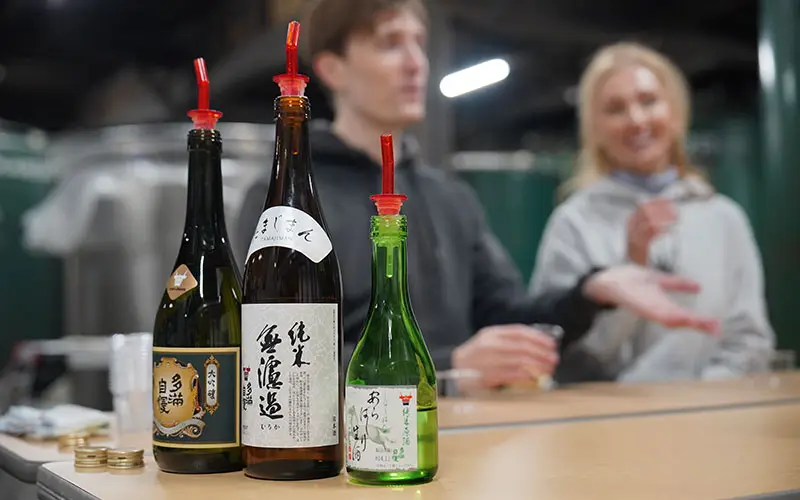
The success of Ishikawa lies in the business' long history and the Ishikawa family's dedication to its craft. Originally growers and sellers of rice, the 13th head of the family established the brewery in 1863. Water was drawn from 150 meters underground to power a waterwheel for polishing locally sourced rice. Since the water - which flows from mountains about 50 kilometers northwest of Tokyo - is medium-hard and contains no iron, it was ideal for sake making.

Today, the water source, which remains unchanged since centuries ago, can still be seen on-site, along with many of the original kura (storehouses) and other production facilities. Indeed, joining the brewery tour is like taking a trip back in time.
For the current 18th generation owner, Yahachiro Ishikawa, preserving the history of the brewery while offering 21st-century experiences is important. "As the only sake brewery serving food within an hour or so from central Tokyo, our concept is 'drink, eat, stay,'" he says.

In addition to two restaurants (one Italian and one Japanese), guesthouse Shubou (which has capsule bedrooms and Japanese-style rooms to accommodate up to 34 people) offers a special lunch using shio koji. This fermented seasoning is made by adding salt and water to rice koji and has various effects including softening meat and enhancing the flavor of ingredients.
The beautifully presented lunch includes items made using shio koji sourced from Ishikawa's sake production including the moreish tomato and jellyfish appetizer served with a peanut vinegar sauce. The warming main dish is oden, a traditional hotpot-style dish with several ingredients simmered in dashi, and the meal is rounded off with smooth vanilla ice cream topped with homemade fermented lemon syrup to balance the palate. The courses are accompanied by three kinds of sake for perfect pairings.
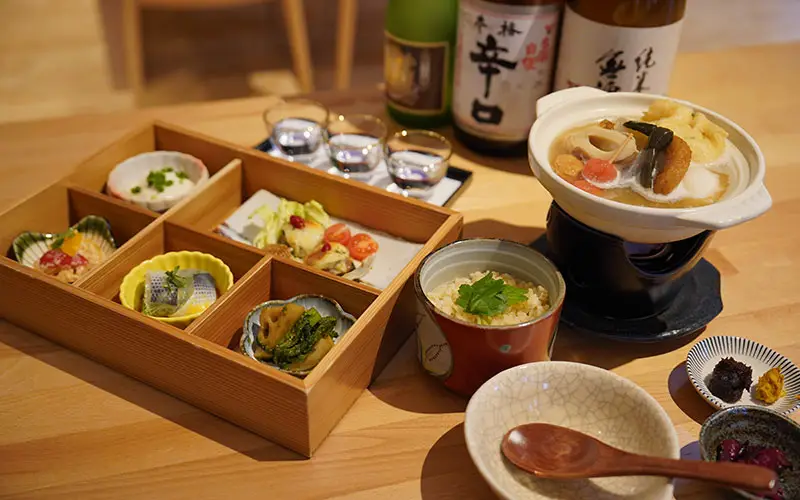
After tasting how this seasoning can enhance flavors, visitors can experience making their own batch (to the degree of saltiness they desire) to take home with them. By simply mixing rice koji with water and salt before leaving it to ferment at room temperature, you can create this versatile seasoning that can be used for marinating meat, poultry, and seafood; cooking rice; or pickling vegetables.
What's more, this substance is good not only for immunity and digestion, but also for skin. Sake makers noticed centuries ago that their hands were smooth as silk thanks to hours working with koji, and today, koji is a popular ingredient in beauty products. Why not try Guesthouse Shubou's toner-making or a hand mask-making experience to feel the benefits of koji for your skin.
With activities to stimulate the mind, satisfy the appetite, and pamper the body, visitors are sure to depart Ishikawa Brewery feeling relaxed and rejuvenated.
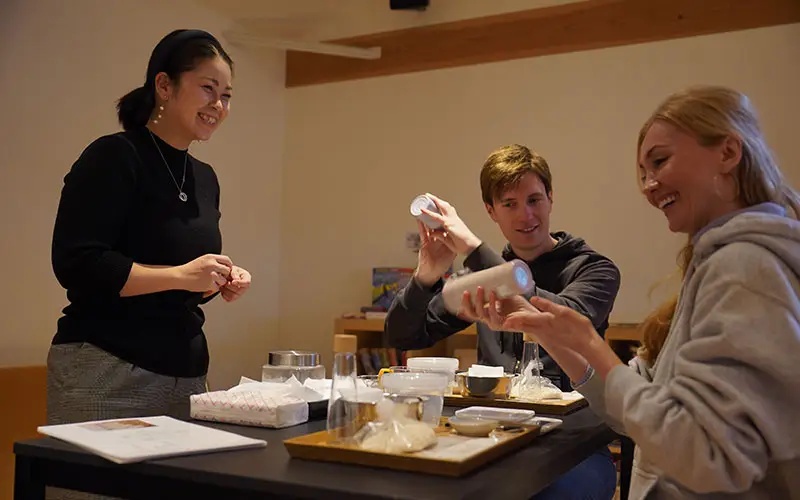
And for those seeking a taste of Ishikawa's sake in central Tokyo, one opportunity is at Ristorante Al Porto in Roppongi's sophisticated neighborhood of Nishi-Azabu. This cozy Italian eatery is led by Italy-trained father-and-son team Mamoru and Hiroyuki Kataoka, who are among the leading Italian chefs in Japan. Their passion is serving extraordinary dishes.
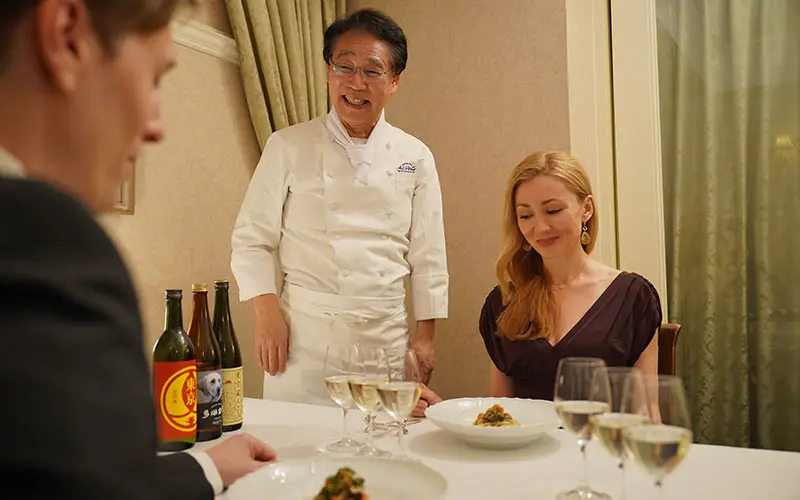
Renowned sake stylist Makiko Tejima has teamed up with Mamoru to offer an exclusive pairing of Japanese-Italian cuisine and sake at Ristorante Al Porto featuring sakes made in Tokyo breweries including Ishikawa.
To prepare the special dinner, Mamoru and Tejima carefully consider every dish and sake, tasting them individually to ensure each enhances the other's flavor while thinking of every detail. Each of the exquisite Japanese-Italian dishes reflects the skill of the chefs who use classic Italian techniques with Japanese sensibilities and only the finest ingredients, sourced as locally as possible. All the sake is also locally sourced from within Tokyo, thereby promoting sustainability.
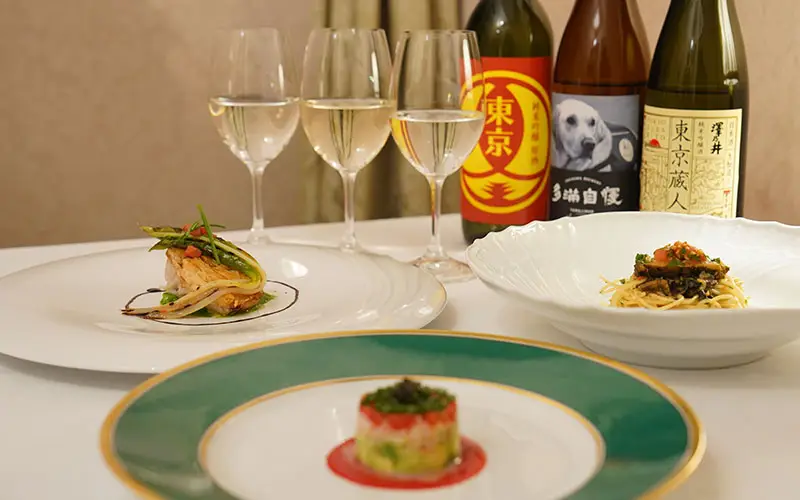
Examples on the sake pairing menu include the sumptuous abalone and fresh tomato spaghetti topped with creamy uni (sea urchin) and freshest, high quality amadai (tilefish) with perfectly crispy skin, demonstrating the chef's skill and originality.
"The pairing of sake and Japanese-Italian cuisine is an unforgettable experience that will open the door to a new world of food." says Tejima.
Thus, in Tokyo, visitors can uncover how koji mold (certified as a national fungus in 2006), the cornerstone of Japan's traditional food culture, lives on in the modern lives of Japanese people as rice koji. And this learning can be done by enjoying delicious food and drinks as well as a variety of hands-on experiences.
※The experience introduced in this article is by special arrangement of Ms.Makiko Tejima.
Please contact her for more information.
Contact:
Saishokukenbi Co., Ltd.
info@saishokukenbi.com






